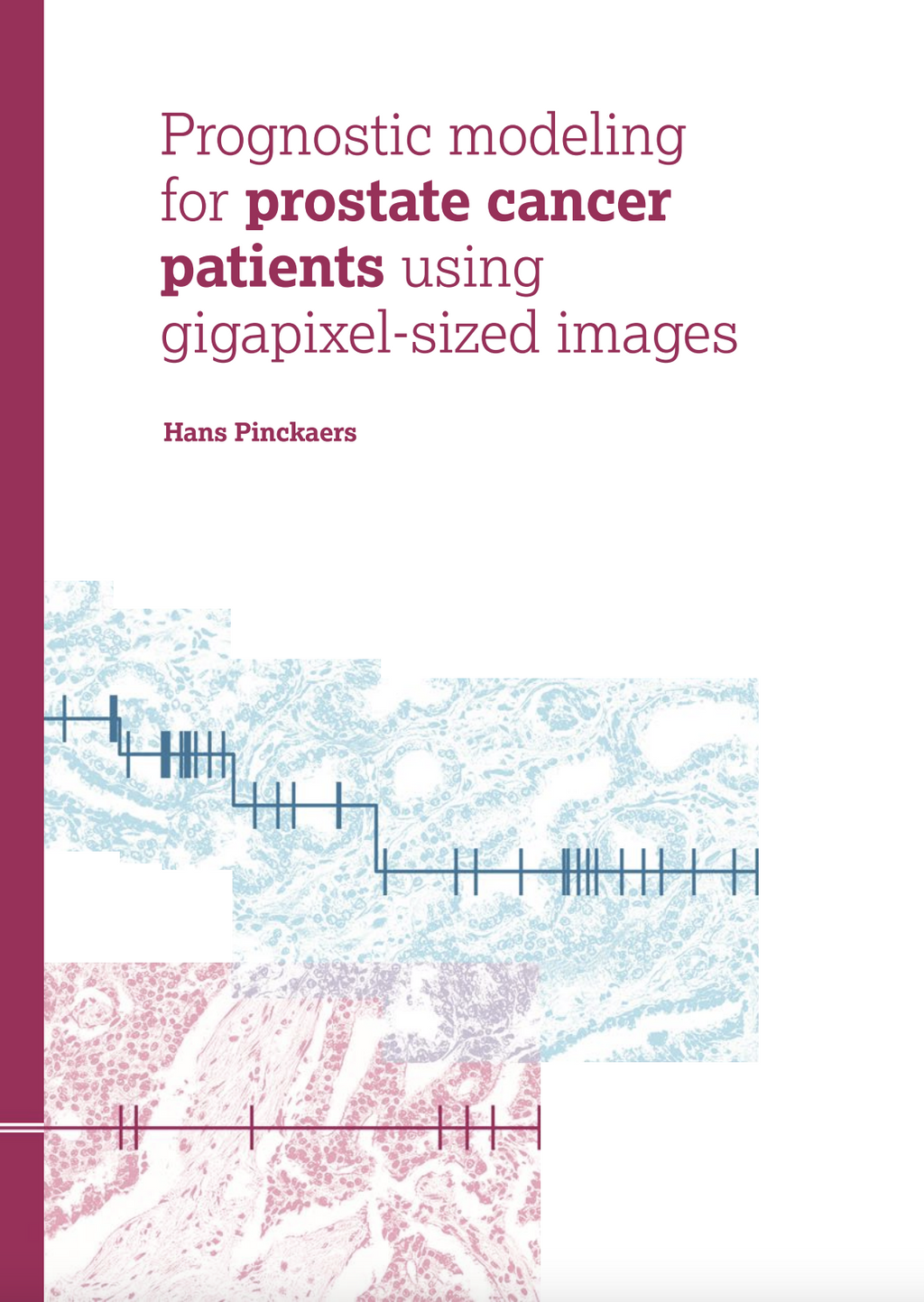Prognostic modeling for prostate cancer patients using gigapixel-sized images
H. Pinckaers
- Promotor: G. Litjens, B. van Ginneken and J. van der Laak
- Graduation year: 2025
- Radboud University
Abstract
In summary, the primary aim of our research was stated as: "To investigate if histopathology slides contain additional information to prognosticate patients." The secondary aim of our research was stated as: "To investigate if we could develop algorithms using entire whole-slide images together with patient-level information."
Chapter II demonstrates how a deep learning system can be set up to predict the biochemical recurrence of prostate cancer using tissue morphology. Trained on a nested case-control study and validated on an independent cohort, the system finds patterns predictive of recurrence beyond standard Gleason grading. Concept-based explanations show tissue features aligned with pathologist interpretation.
Chapter III proposes a method called 'streaming' to train convolutional neural networks end-to-end on multi-megapixel histopathology images, circumventing memory limitations. We tile the input image and reconstruct activations and gradients, allowing the use of entire high-resolution images during training, thus eliminating the need to train on smaller patches.
Chapter IV applies streaming to train models on whole prostate biopsy images using only slide-level labels from pathology reports. It shows a modern CNN can learn from high-resolution images without patch-level annotations. The method reaches a performance similar to that of state-of-the-art patch-based and multiple-instance learning techniques.
Furthermore, in Chapter V, we will show the preliminary results of applying our streaming methodology to a prognostic survival task.
In summary, the thesis explores computational pathology methods to analyze entire high-resolution histopathology images despite memory constraints. It shows neural networks can learn from morphology to aid prostate cancer diagnosis and prognosis when trained end-to-end on whole-slide images using readily available slide-level labels.
